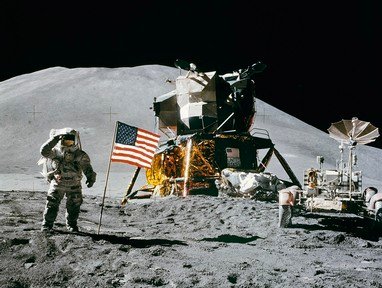Quiz Answer Key and Fun Facts
1. Who was the NASA administrator at the time of the Apollo 11 mission?
2. Which of these options was selected to achieve the moon landings in 1962?
3. How many times was Pad B at Launch Complex 39 used during Project Apollo?
4. How many rungs were there on the ladder of the Lunar Module?
5. The primary electrical power source for the Apollo Command and Service Module (CSM) was supplied by:
6. Three Apollo missions - 15, 16, and 17 - were extended three day explorations of the moon utilising the Lunar Roving Vehicle. By what letter were they known?
7. Part of the Environmental Control System (ECS) of Apollo spacecraft consisted of renewable cartridges containing lithium hydroxide LiOH. The purpose of these was to:
8. How many main parachutes were deployed after re-entry to recover the Apollo Command Module?
9. How many Saturn V rockets were built?
10. An essential part of the equipment needed for an Apollo astronaut to walk on the moon was the PLSS. What do these letters stand for?
Source: Author
mstanaway
This quiz was reviewed by FunTrivia editor
bloomsby before going online.
Any errors found in FunTrivia content are routinely corrected through our feedback system.
